An Inside-Out Garden
Gardens are never created to be left, yet that time comes to us all. After half a century in a house they’d built, surrounded by large gardens created from scratch, Robin and Lynn Bublitz took a deep breath, downsized their possessions and waved their plants goodbye. Words Kate Coughlan, Photos Alanah Brown.
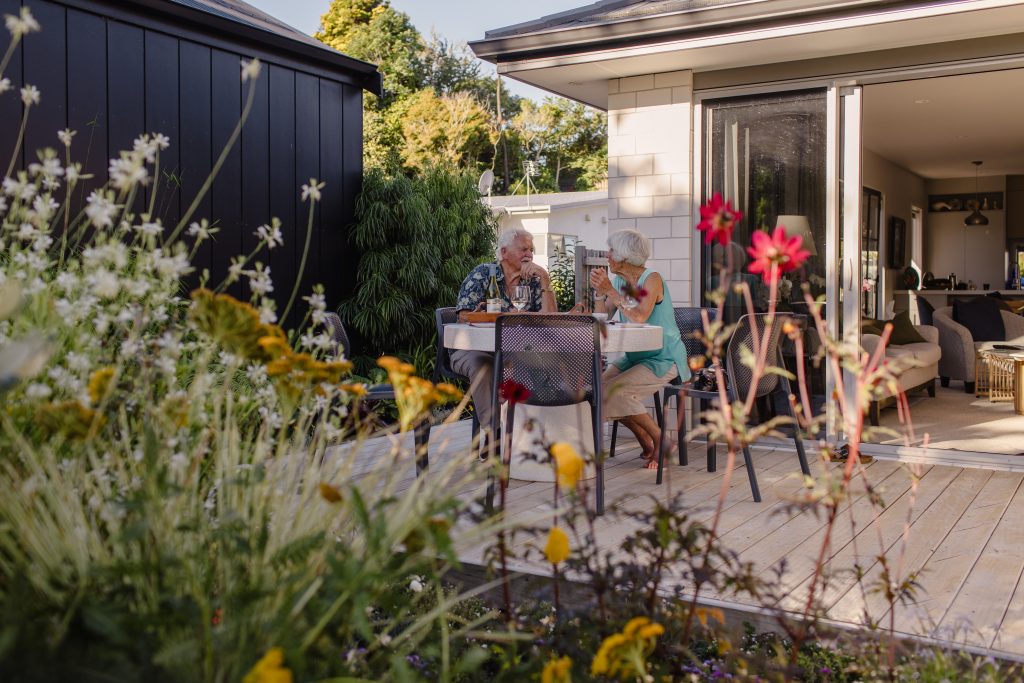
Robin Bublitz and husband Lynn, a prominent New Plymouth citizen with decades of public service in civic leadership, education and local body politics behind him, had a detailed plan for retirement; they had put their names down at a local rest home presuming it’d be about five years before the particular three-bedroom cottage they wanted became available. They anticipated having years to sift through a lifetime of possessions in preparation for their eventual move. Best-laid plans, and all that …
In the company of a very helpful project-manager daughter, Robin and Lynn were out for a drive one Sunday two years ago and poked their noses into an open home. Just to have a look, mind. Before Robin had entered the living room, while still standing in the entrance hall, she pronounced, ‘Oooh! This is it!’
And thus, it was. All plans for leisurely downsizing the family home, built 52 years earlier by Lynn and Robin for them and three children, flew out the window. But what windows they were in the new house – floor-to-ceiling, overlooking gardens on every side and a spectacular view over a west-facing bush-clad gully. The most perfect spot for that precious thing – a west-coast sunset. Within weeks, it had all happened.
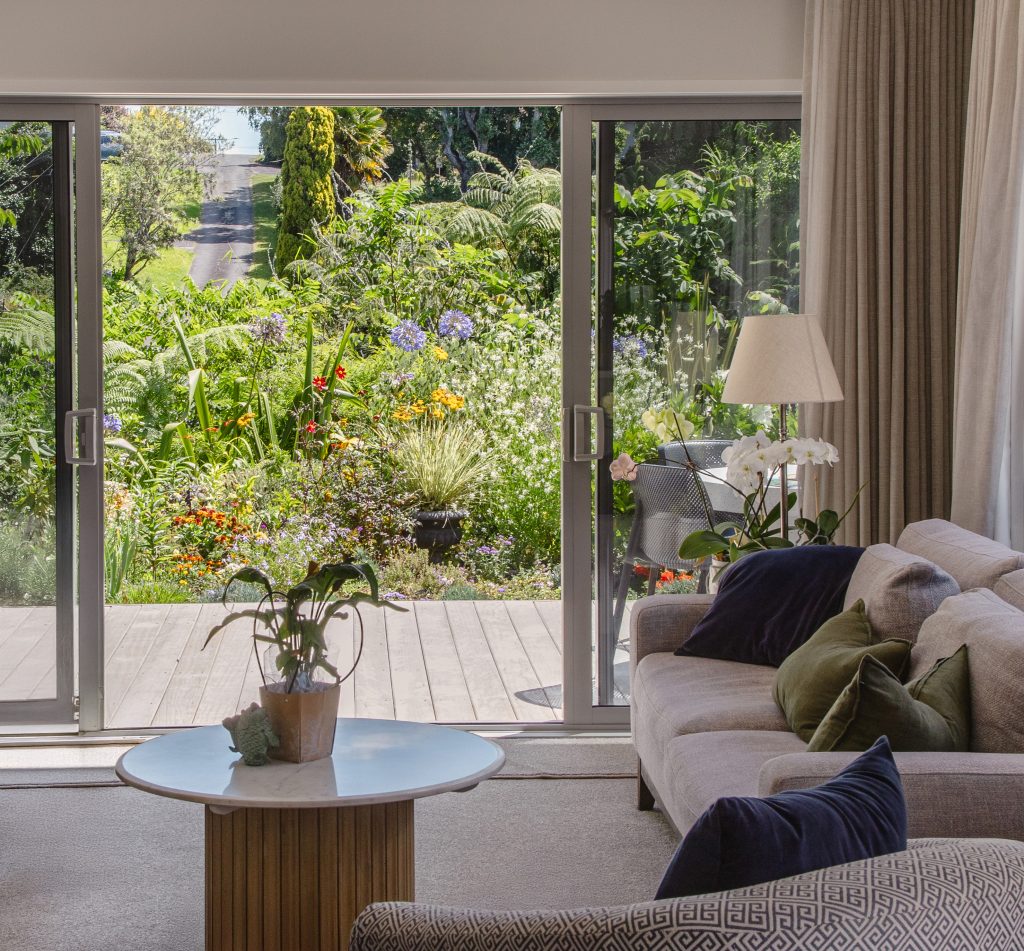
‘Moving so quickly was a traumatic experience,’ says Lynn, a former New Plymouth Boys’ High deputy principal, science and horticulture teacher, Inglewood High School principal (now its patron), and New Plymouth deputy mayor. He is not a man given to hyperbolic statements. ‘These are questions that everyone has to face at some time in their life. What to bring with you, what to discard? Hard decisions when life is upended.’
Also falling into the ‘hard basket’ was the question of how to leave Lynn’s half-acre garden that had been their joy and, as is often needed in positions of public leadership such as Lynn held, solace and peace.
Lynn has been a member of New Plymouth’s internationally renowned Pukeiti Rhododendron Trust since he was a young man and chaired the trust during its successful transfer into Taranaki Regional Council ownership. Rhododendrons are a big part of his life and have taken him to China and the border with Burma to see the native rhododendron habitat, and saw him amass a much-loved collection of 70-plus examples forming the backbone of his garden.
There’s a careful plan to it all with every view pleasing the eye … with a new burst of colour awaiting the arrival of a new season.
He looked closely at the surroundings to their new home and felt optimistic that he could create beauty for each room linked so closely to the gardens through the massive expanses of glass. It would be an inside-out gardening experience, always thinking of how the garden would look from within the house.
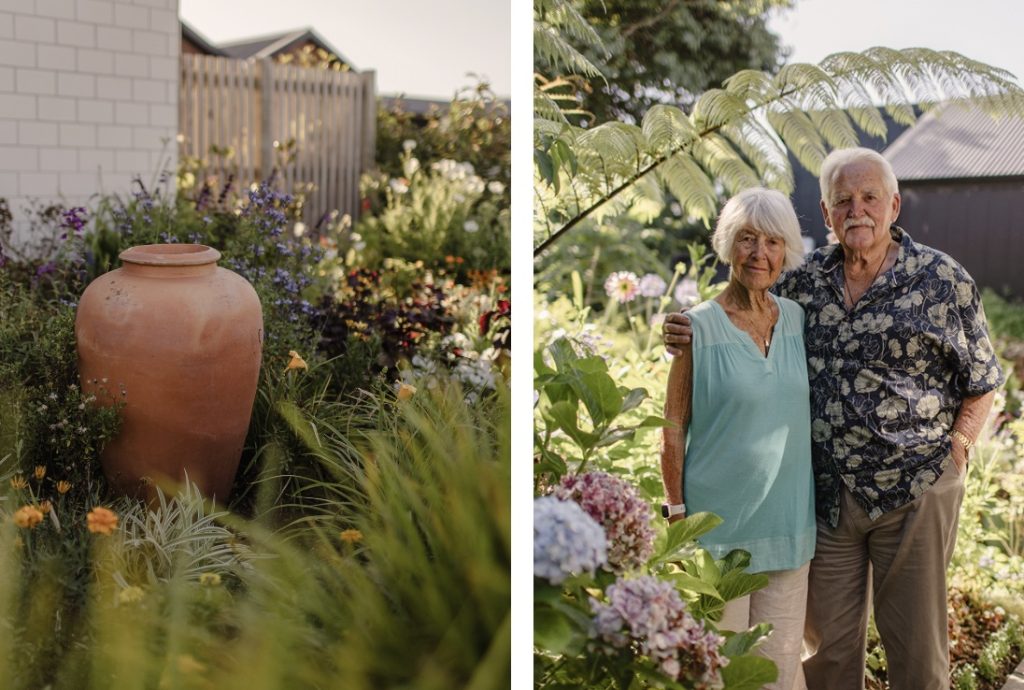
However, the garden view on moving day was mostly coarse bark with a scattering of plants which were a gentle reminder of a previous gardener. Lynn planned to dispose of the bark and begin planting. The subdivision had previously been a fish factory and under their property remained the road foundation turning pad for trucks, which is still there today.
Not even Lynn’s lifetime of gardening, nor his botany degree from Victoria University was going to make this an easy property to beautify. Removing the woodchips came first, along with the realisation that planting required at least a sharp pick wielded by a strong arm, if not an auger.
Friends turned up on their first weekend in the new home to mass-plant tulips and had their work cut out to get the plants into the ground. Fortunately, another friend came to the rescue with copious quantities of compost, and Lynn’s new gardening career got going.
How does a gardener, who for half a century had space and vistas to play in, cope with a pocket-handkerchief-sized garden? Quite well it seems. Lynn has thrown himself into the challenge of gardening to the view from inside each room, choosing its colour palette to match the room’s interior with year-round colour from a clever combination of annual and perennial plants. He’s influenced by Japanese principles in which foliage provides interest and defines boundaries, and in which perspective draws the eye to a prominent plant or object to make small spaces seem larger.
‘However, colour is really my dictate,’ he says. ‘There has to be something flowering all year round, and all the colours have to flow together harmoniously like a tapestry forming a carpet of colour.’
How does a gardener, who for half a century had space and vistas, cope with a pocket-sized garden? Quite well it seems.
Lynn’s new love for a riot of colour makes Robin (who emphasises that she is most definitely not the gardener in the family) laugh. ‘For years, I’ve been telling Lynn he should mix up the colours and he’s always said you shouldn’t. Now he loves having all the brights together.’ What makes this even more interesting is that Lynn is technically colour blind. Not that colour-blind people cannot see any colour; their difficulty is seeing variations in reds and blues, particularly in low light. Lynn takes this gentle ribbing good-naturedly and points out how his planting delivers rivers of colour flowing gently through the garden.
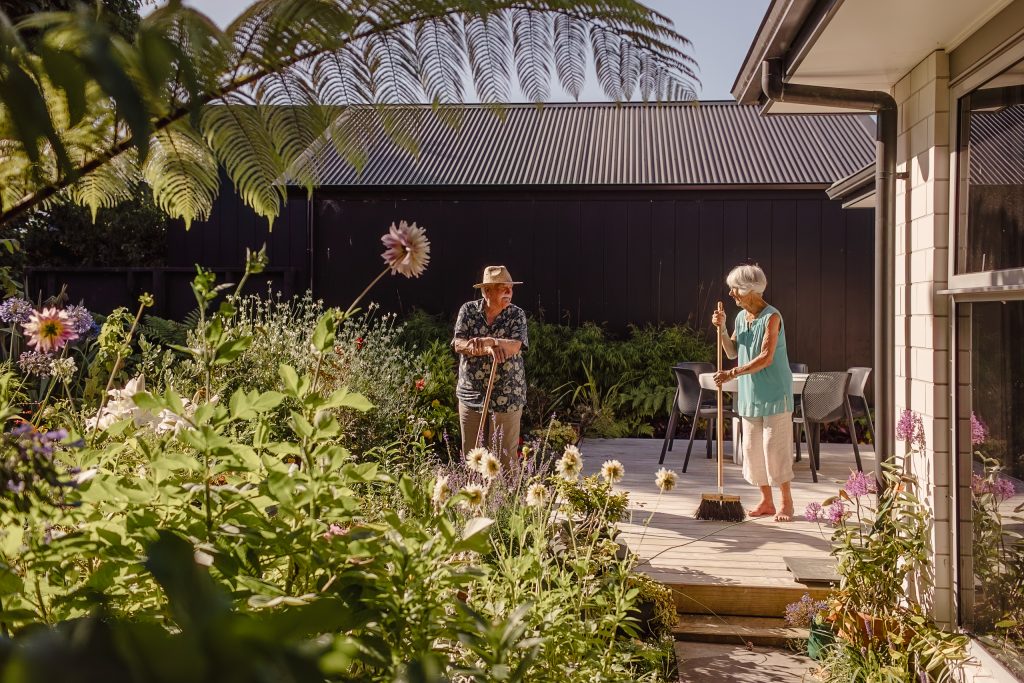
There’s a careful plan to it all with every view pleasing the eye. He uses a tall pot to draw attention in the garden beyond the kitchen window, for example. And in numerous pots he plants bulbs and annuals together, so he always has a new burst of colour awaiting the arrival of a new season. His skilfully managed tiny vegetable patch produces broad beans, tomatoes, potatoes, beetroot, many lettuce plants and parsley from the hedged row of plants.
Would it be a Bublitz garden if there were no rhododendrons? Hard to imagine, so Lynn set to choosing his favourites; Ron Gordon’s ‘Rubicon’, ‘Eric’s Triumph’ from Cross Hills, ‘Countess of Haddington’ (a favourite from the time of Lynn’s childhood garden in Taranaki), ‘Kaponga’, bred in south Taranaki at Hollard Gardens, ‘Lemon Lodge’ raised at Pukekura Park by John Goodwin, ‘Floral Gift’ raised by Mark Jury, and ‘Mi Amor’, an American-bred, tubular, creamy white with a strong scent. The rhododendrons flower from September to November giving Lynn and Robin a memory-lane experience of their previous garden.
Do they miss it? They adore their new property and are more than happy with their move, sudden as it was, road foundation and all. As in their previous garden, there is peace and contentment and a background of birdsong and bees humming, and many fluttering monarch butterflies. Gardens, as they say, are great teachers and here is Lynn, one of Taranaki’s great teachers, at peace in his.
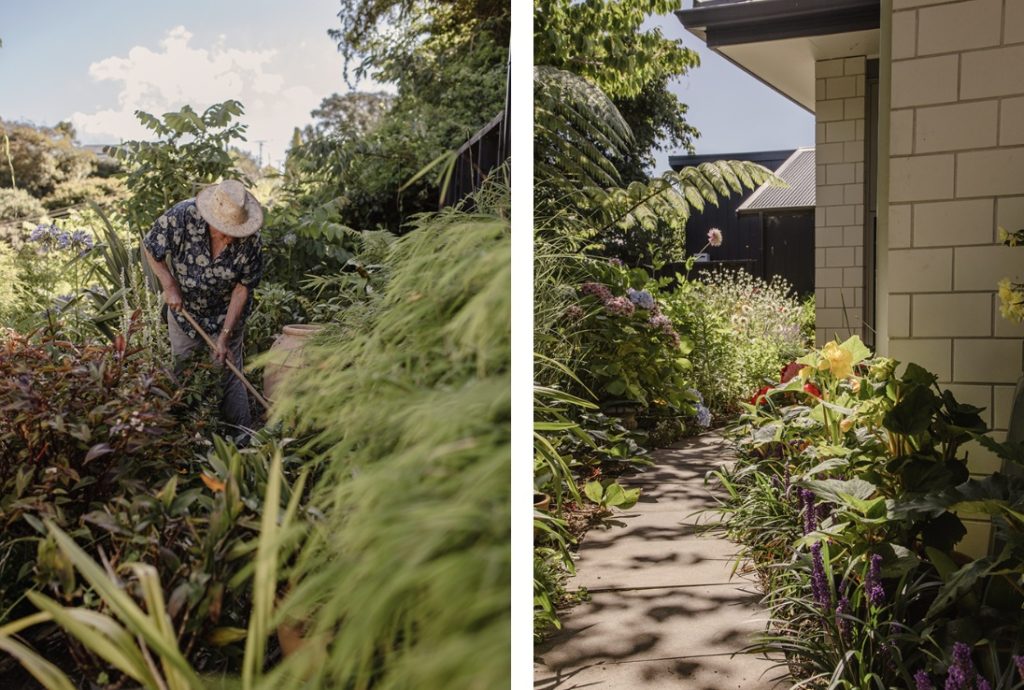 Lynn’s Lessons of downsizing
Lynn’s Lessons of downsizing
- Use the green ‘borrowed backdrop’ to provide the basis for the garden.
- Gardening in awful soil means I have to buy compost as I don’t have the space to make it. I can’t use good local compost from the piggery as the smell would upset the neighbours.
- If you have room, transplant pieces of key plants from your old garden.
- Bring your favourite ornaments and pots to focus new plantings.
- If there are shrubs planted by previous owners keep those which suit your plans. They can become the skeleton of the new garden.
- Include, among other purchases for the new garden, a selection of loved, named champions from the old garden.

